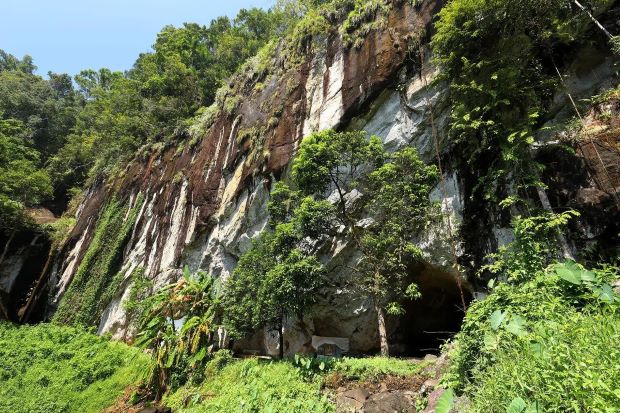Ancient hominins of Sri Lanka: Who was the Balangoda Man?
By Charlie Haigh
The Balangoda Man were a prominent and populous group that inhabited parts of Sri Lanka during the late Quaternary period. The earliest evidence of this group dates back 38,000 years, where archaeological sequencing of artefacts has helped paint a detailed timeline of their settlements. With an appearance similar to that of a Neanderthal – a prominent supraorbital ridge, heavy jaw, and thick skull – this species of ancient hominin would have towered over the modern-day occupants of their ancestral home.
Thought to be responsible for the Mesolithic era ‘Balangoda Culture’, a copious number of artefacts suggesting settlements have been found in the caves surrounding the town of Balangoda. Among the artefacts uncovered from the area was evidence of advanced practices amongst this ancient group.
Proof of the Balangoda Man’s prolific hunting skills was uncovered from sites across the region. Daggers made from sambar antler and hand-axes carved from elephant leg bone lay among the commonly uncovered possessions.
Along with their tool use and hunting skills, there was also strong evidence that the group regularly used fire, and that they camped out in the company of their domesticated dogs. Geometric microliths, small stone tools used for hunting that date back around 27,000 years, made up part of this arsenal. Along with some sites in Africa, these geometric microliths so far make up the earliest dated record of stones used in this way.
Bizarrely, a frequent number of marine-related items were found across the excavated sites. Despite all the settlements being around 40 kilometres (24.8 miles) from the coast, marine shells, shark teeth, and evidence of sea salt were consistently unearthed, suggesting a strong link between the Balangoda Man and distant coastal regions.
While it remains unclear how the group had access to the distant coastline, the abundant evidence of their daily lives has enabled archaeologists to infer a great deal about what life was like for the Balangoda Man.
Research suggests the group inhabited small settlements stretching around 50 square metres (538 square feet), consisting of no more than a handful of nuclear family structures.
While they were skilled hunters, it is not believed they had yet developed the ability to cultivate crops. While there is evidence of abundant fire use, it’s believed that they weren’t always cooking the animals they caught, but instead eating them raw.
Despite being anatomically modern humans, they had a few key features to make them stand out from the crowd.
Their Neanderthal-like exterior came with the addition of an impressive set of teeth. They were also comparatively tall for the region, measuring in at around 170 centimetres (67 inches) – that’s a full 20 centimetres (7 inches) taller than the average modern-day inhabitants of Sri Lanka.
The earliest skeletal remains of the Balangoda Man were found in Fe Hien Cave. Belonging to a child, these remains have been dated back around 30,000 years, making them the earliest reliably dated record of anatomically modern humans in South Asia.
Carbon samples from remains found in Bellanbandi Palassa date back just 6,500 years, suggesting the Balangoda man continuously occupied the area for a historically significant period.
Despite their numbers decreasing as Indian mainlanders began migrating to the area, there is strong biological evidence of a genetic link between the Balangoda man and the modern Veddas, indigenous people of Sri Lanka. Sharing similar anatomical features, the Veddas historically occupied natural caves in circumstances similar to that of the Balangoda man. Over time, some groups of Vedda integrated into the local communities throughout Sri Lanka.
The Balangoda Mans’ success, historical significance, and treasures left behind have allowed archaeologists to study the development of modern humans, and further our understanding of how we came to be
– iflscience.com



Comments are closed, but trackbacks and pingbacks are open.